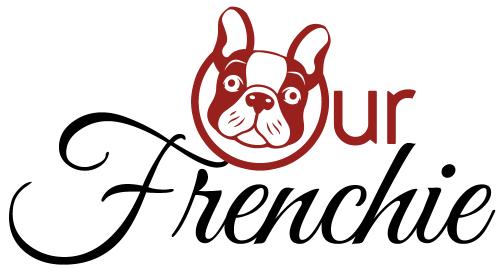Facts & Fun
French Bulldogs History, Origination and Facts
Page Contents
The French Bulldog, also called Frenchie, is a small domestic dog breed. The Frenchie were the result of a cross between the Bulldog ancestors. Imported from England and the local swarms of France, Paris in the nineteenth century (19th). In 2020, they were the fourth most popular dog registered in the United States (by AKC – American Kennel Club data), and the United Kingdom. French bulldogs were ranked as the third most popular dog in Australia in 2017.
Root Source of French Bulldogs

The origin of the modern race of the French Bulldog comes directly from the dogs of Moloshi – an ancient Greek tribe. Dogs that were distributed in antiquity by Phoenician merchants. British Molossian dogs developed in the mastiff. A subfamily of the Mastiff was a bull biter, a type of bull used for bullfighting. Blood sports such as the harassment of bulls were banned in England in 1835, so these Frenchie remained unemployed. However, they have been bred at least since the 19th century for non-sporting reasons. So their use has changed from a sports competition to an accompanying competition. To reduce its size, some Bulldogs were crossed with terriers, while others were crossed with pugs. In 1850, the toy Bulldog had become common in England and appeared in the exterior when it started around 1860.
At the same time, Nottingham top workers expelled by the industrial revolution began to settle in Normandy, France. They brought a variety of dogs, including Mini Bulldogs.
Growing Popularity in France
Dogs became popular in France and a small bulldog business was imported. With breeders in England sending bulldogs that they saw as too small or raised with defects such as ears. In 1860, some miniature bulldogs remained in England. As well as their popularity in France and thanks to the exploits of exporters of specialized dogs. The small species of Bulldog gradually became a breed and got its name, the Bouledogue Francais. This Francization of the name in English is also a contraction of the words boule (ball) and dogue (molosser or mastiff).
Dogs were exceptionally popular and looked for after by ladies in the public eye. In addition to innovative authors, specialists, and beauticians. As it has changed, it is possible that the Terrier and Pug effects were introduced to develop traits. Such as the long straight ears of the breed and the roundness of their eyes.
Club of Race and Modern Recognition
Bulldogs have been very popular in Western Europe in the past. One of his ancestors was the English Bulldog. The Americans had been bringing in French bulldogs for some time. Yet it was not until the point when 1885 that they needed to set up a rearing system in the United States. They were primarily ladies of the public who displayed without precedent for 1896 at the Westminster Kennel Club Dog Show.
They returned with even more contributions the following year, where the bidding process would have future implications. The judge responsible for the dog’s exhibition, Mr. Sven Feltstein, chose only the winners with years doubling “Pink of the Ears” on the top. As in the case of the English Bulldogs. The ladies formed the Bulldog Club of the French of America. And created the breed standard, which for the first time stated that “ear ears” were the right type.
French Bulldogs Become Official Breed in United States

The American Kennel Club perceived the breed rapidly after the establishment of the Breed Club, and in 1906 Frenchie was the fifth most prevalent canine breed in the United States. In 2013, the American Kennel Club (AKC) positioned the French Bulldog as the eleventh most well-known breed in the United States and delighted in a solid increment in prominence of 54th place 10 years sooner, in 2003.
In 2014, they were the ninth Most popular breed of dogs registered in the United States. This new breed of Bulldog first arrived in England in 1893, unleashing the English bulldog, while French imports did not meet the new breed standard for this period and prevented the British people from meeting with the French.
The Kennel Club was originally recognized as a subset of the existing English Bulldog and not as a completely new breed. During this time, some English breeders bred French bulldogs to revive the Bulldog Toy breed.
“French Bulldog” Name Confirmation
On July 10, 1902, a meeting took place in the house of Frederick W. Cousens to found a racing club that sought individual recognition of the French race. The norm of the adopted race was the same that is already used in the United States, France, Germany, and Austria. In spite of the resistance of Miniature Bulldog (the new name of the Toy Bulldog breed) and Bulldog, in 1905 the Kennel Club changed its racial strategy and remembered it independently of the English assortment, first as Bouledogue Francais, and toward the finish of 1912. The name changed to French Bulldog.

Deceptive Appearance of Frenchies
The French bulldog’s acceptable colors according to the breed standard are the different colors of brindle, tawny, brown or white with striped spots (known as “pied”). The most common colors are blue, so sable and dark blue are rarer than other colors. The breed clubs recognize no other colors or patterns. This is because some colors are associated with genetic health problems that are not normally found in the breed. Especially the blue color associated with a form of alopecia (hair loss or hair loss), sometimes referred to as “alopecia” of the blue dog.
Although discussed in detail by some organizations. There seems to be an indication that health, hair and/or skin is caused by the colored pigment (melanin) that melts into the hair. The American Kennel Club states that the French can be a white, brindle, fawn, and brindle & white. The skin is soft and relaxed on the head and shoulders, forming Wrinkles, moderately thin, shiny, short and soft fur.


